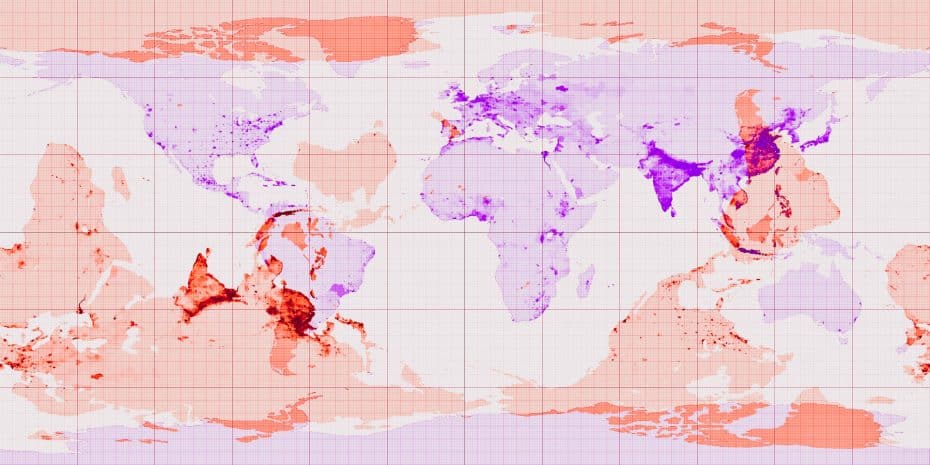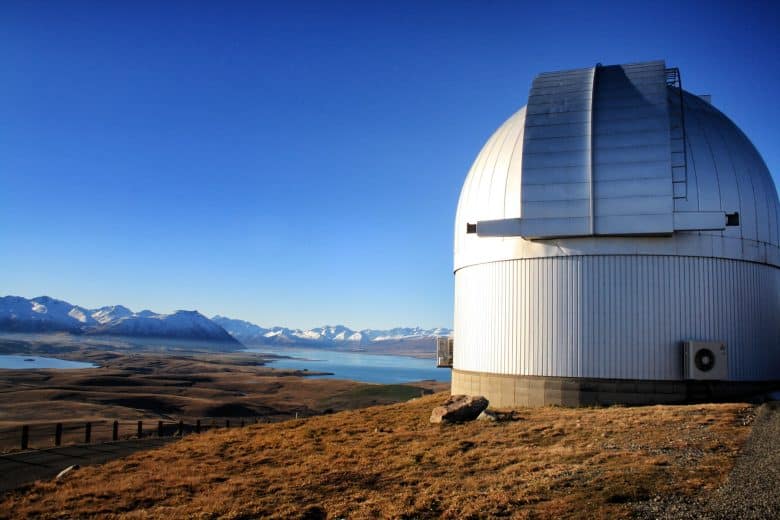A pair of antipodes is any two points opposite to one another on the Earth’s surface, which are connected by a straight line that runs through the Earth’s center. The antipodal points are as far away from one another as possible, with a long circle distance of about 12,500 miles.
That definition is already giving us several curious facts and trivia to work with. But there’s so much more. Join us on the longest hypothetical trip to the furthest confines of Earth to find out more about antipodes.
1. What are antipodes?

As we mentioned above, antipodes are points on Earth that are directly opposite from each other, such that if you were to draw a straight line through the center of the Earth, these two points would be on either end of this line. Antipodal points always come in pairs and are always relative to one another.
2. They mean “opposite your feet”

The concept of antipodes dates back to ancient Greek scholars who laid the groundwork for modern geography and cartography. In particular, the philosopher Crates of Mallus developed the first known globe featuring these antipodal points during the 2nd century BCE. The term “antipode” is derived from the Greek words “anti” and “pous,” meaning “opposite” and “foot,” respectively.
3. You literally couldn’t be further from your antipodes
The surface distance between two antipodal points depends on Earth’s circumference, which is approximately 24,901 miles (40,075 km). Consequently, the surface distance between a pair of antipodes is half this value – about 12,450 miles (20,037 km) – making it the maximum possible distance between any two points on Earth. If you were somehow able to dig a straight tunnel through Earth from one point to its antipode – without taking into account any geological or logistical challenges – the shortest distance between these two points would be the Earth’s diameter. Earth’s average diameter is approximately 7,917 miles (12,742 km).
4. Most of the time, one of the points will be underwater

One fascinating aspect of antipodes is that, more often than not, one of the two antipodal points will be submerged in water. This occurs because Earth’s surface is primarily covered by oceans, which make up around 71% of the planet’s surface. In these instances, a person standing on land at one point and their theoretical antipode would find themselves staring into the depths of an ocean. This phenomenon highlights the vastness of Earth’s water bodies and the rarity of finding antipodal points where both locations are on land.
5. Fun antipodal pairings
In some exceptional cases, both antipodal points actually happen to be on land, creating unique connections between distant cities or regions. For example, Wellington, New Zealand, is almost perfectly located on the antipodes of Madrid, Spain. Likewise, Sri Lanka shares its antipode with a location in Argentina. and Singapore’s counterpart is located near Quito, Ecuador.
Many cities across Venezuela and Colombia have their antipodes in Indonesia, while the continental USA, as well as most of Europe (except for the Iberian Peninsula), have their antipodes on water in the Indian and Pacific oceans, respectively.
6. Bugs Bunny was wrong
Bugs Bunny, the famous cartoon character, was known for his mischievous tunnel-digging escapades. Often, he would end up in unexpected locations, like China, after digging straight down from the United States. However, contrary to popular belief and the antics of Bugs Bunny, digging a tunnel straight down from the US would not lead you to China. The antipodes of most of North America are actually located in the remote Indian Ocean. So, if Bugs Bunny were to dig straight down from his home base, he would find himself surrounded by water instead of the Great Wall.
7. Websites and tools to find your antipodes
Discovering your antipodal point, or the exact opposite location on Earth, can be a fascinating and educational experience. There are numerous websites and tools available online that can help you determine your antipodes with just a few clicks. One popular website is Geodatos.net, which allows users to input their address or coordinates and instantly see their antipodal location on an interactive map. Another useful tool is the FindLatitudeAndLongitude.com website, which also provides the ability to determine antipodes based on address or GPS coordinates.
8. The term antipodes can be problematic when not used properly
Historically, Europeans used this term to refer to the farthest lands on Earth, which were considered to be directly opposite their homelands. As a result, Oceania became known as the Antipodes by Europeans. This, in turn, caused Americans to also use the term to refer to Australia and New Zealand, as they’re in the Southern Hemisphere and perceived as far away from the United States.
Today, the term, when used to refer to the countries or people in the South Pacific region, can be seen as problematic and even considered a micro-aggression. It often refers to the regions of Australia and New Zealand in relation to Europe, which may reinforce a Eurocentric worldview. By using the term antipodes, we might be subtly suggesting that Europe is the center of the world and that other regions are merely opposites or counterparts to it.
9. Climates tend to be similar in antipodal points


When considering the climate of antipodes, it’s interesting to note that despite the vast distances between them, their climates are often surprisingly similar. This can be attributed to the fact that both sets of antipodes are typically located at the same latitudinal position on opposite sides of the Earth. As a result, they receive a similar amount of sunlight and tend to have similar average temperatures. However, factors such as elevation and local weather phenomena can still cause significant differences in the overall climate experience of each antipode pair.
10. Commercial airplanes still can’t fly directly between antipodal points
Air travel has come a long way since the invention of the first airplane. However, even with all the advancements in aviation technology, airplanes still couldn’t fly directly between antipodes. The main reason for this limitation is the great distance involved in traveling between antipodal points, which often exceeds the maximum range of commercial airplanes. As a result, travelers often have to make layovers and change flights several times before reaching their antipodal destinations.
11. It’s an-TIP-uh-deez, not AN-tuh-powds
Contrary to popular belief, the word “Antipodes” is not pronounced as “AN-tee-podes.” It is actually pronounced as “an-TIP-uh-deez.” The confusion in pronunciation often arises due to the word structure and its similarities with words like “episodes” or “exodus,” which influence people to pronounce it differently. However, “Antipodes” comes from the Greek words “anti” (meaning opposite) and “pous” (plural: podēs), meaning foot, and its accurate pronunciation stems from these roots.
























Leave a Reply
View Comments